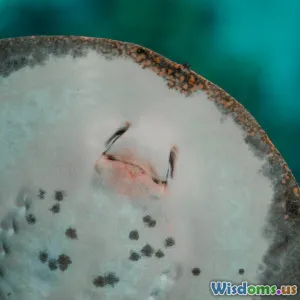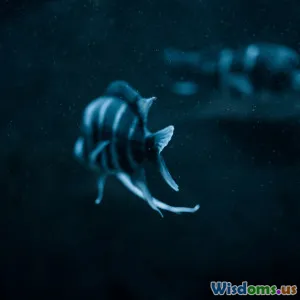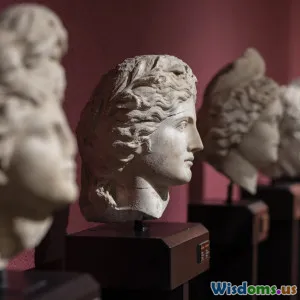
Are Mermaids More Than Myth The Science Behind Sea Legends
7 min read Explore the scientific insights behind mermaids and uncover the reality woven into these sea legends. (0 Reviews)
Are Mermaids More Than Myth? The Science Behind Sea Legends
Introduction
For centuries, the shimmering silhouette of a mermaid—half-human, half-fish—has captivated the human imagination. These enchanting creatures have graced folklore, literature, and pop culture, stirring curiosity and wonder about whether they are mere figments of myth or perhaps rooted in some form of reality. But could there be truth behind the tales? As science and legend collide, this article explores mermaid legends through the lens of historical accounts, biological explanations, and cultural interpretations, separating fact from fantasy.
Roots of the Myth: Historical Sightings and Cultural Significance
Mermaids have a rich history seeped in maritime cultures. The earliest known depictions date back to ancient Assyria around 1000 BCE, where the goddess Atargatis transformed into a fish-bodied woman out of remorse. In Western literature, mermaids appear in Greek mythology, for instance, as sirens—mystical beings who lured sailors to their doom with their voices.
Maritime Reports and Mariners’ Accounts
Many sailors' logs from the 15th to 19th centuries mention mermaid sightings. Christopher Columbus famously reported seeing “women” atop a reef in the Caribbean during his 1493 voyage, though he remarked they were not as beautiful as portrayed. These accounts often originated in the realm of long sea journeys, where isolation, optical illusions, and exhaustion may have swayed perception.
The Science Behind the Stories
Manatees and Dugongs as the Mermaids’ Muse
In 2002, Smithsonian marine biologist Dr. Paul S. Hulsman argued that many mermaid sightings were likely misidentified aquatic mammals such as manatees or dugongs. These slow-moving herbivorous marine mammals possess a rounded body and features that could spark a marine-enchanted imagination, especially when partially glimpsed from afar.
Manatees primarily inhabit tropical and subtropical waters—including the Caribbean, West Africa, and the Amazon—regions historically visited by sailors who reported mermaid sightings. Their relatively human-like eyes and the way their forelimbs occasionally wave or overlap during swimming may have contributed to illusions of a human-like figure.
Optical Phenomena and Brain Patterns
Visual hallucinations, especially under stress or fatigue at sea, might have triggered some mermaid sightings. The brain tends to interpret ambiguous stimuli in patterns it recognizes, a phenomenon known as pareidolia. Mistaking waves, floating debris, or even species like seals or otters for mermaids could have been amplified by the sailors’ hopes and fears.
Evolutionary Perspectives and Genetic Ancestry
Some scientists speculate about human evolutionary fascination with aquatic traits, drawing from the “aquatic ape hypothesis,” which suggests early human ancestors may have adapted to semi-aquatic environments. Although this remains highly controversial and not widely accepted, it provides a theoretical framework for why aquatic-human hybrid myths like mermaids may resonate deeply in human psychology.
Beyond Biology: Symbolism and Social Functions of Mermaids
Mermaids are more than mythical creatures; they often embody human hopes, fears, and challenges tied to the sea. As symbols, they represent the mystery of the ocean, female beauty, danger, and transformation.
Folklore as a Moral and Cultural Lens
In Scandinavian and Celtic traditions, mermaids often captivate young men, warning against temptation or reckless behavior. Their portrayal ranges from seductive to malevolent, reflecting societies’ ways of encoding lessons about respect for nature and the unknown.
Influence on Pop Culture and Modern Interpretations
The image of the mermaid has evolved from ominous myth to iconic emblem of wonder and environmentalism. Disney’s The Little Mermaid, for instance, romanticizes their legend, while NGOs use mermaid imagery to raise awareness about ocean conservation.
Investigating Modern Sea Mythology Through Science
Advances in Marine Biology and Technology
Modern sonar and underwater exploration have mapped countless marine species, none of which corroborate the existence of mermaids. However, the ocean’s vastness and unexplored areas leave room for new discoveries, fueling ongoing fascination.
The Role of Cryptozoology
While mainstream science dismisses mermaids as mythical, cryptozoologists continue to investigate eyewitness reports, treasure legends, and ancient texts. Although evidence remains anecdotal, these investigations keep the dialogue alive between myth and science.
Conclusion
The legend of mermaids shines at the crossroads of human imagination and natural phenomena. Scientific scrutiny suggests misconceptions—such as sightings of manatees and optical illusions—have likely inspired these alluring sea tales. However, the cultural resonance and symbolic power of mermaids transcend biology, reflecting complex human relationships with the unknown ocean.
Whether mermaids are myth or hidden reality may remain unanswered, but understanding the blend of science and storytelling enriches our appreciation of these enigmatic sea legends. Next time you gaze across the horizon where the water meets the sky, remember that beneath the waves lies a world where myth and nature dance in curious harmony.
References
- Hulsman, P. S. (2002). "Mermaids: Facts or Fantasy?" Smithsonian Ocean Portal.
- Green, R. H. (1993). Maritime Myths and Memories. University Press.
- Smith, A., & Johnson, B. (2015). The Sea and Human Imagination. Marine Literature Journal.
- Grigg, R. A. (2019). “Manatees and Mythology: The Origins of Mermaid Legends.” Marine Biology Archive.
Image credits: Pixabay
Rate the Post
User Reviews
Popular Posts

















